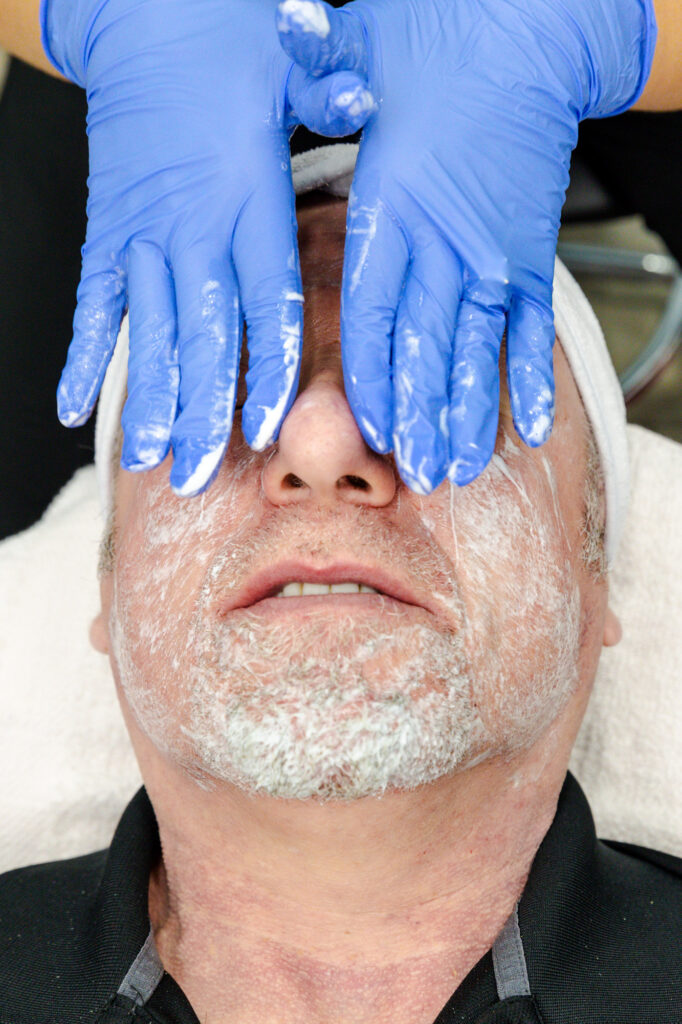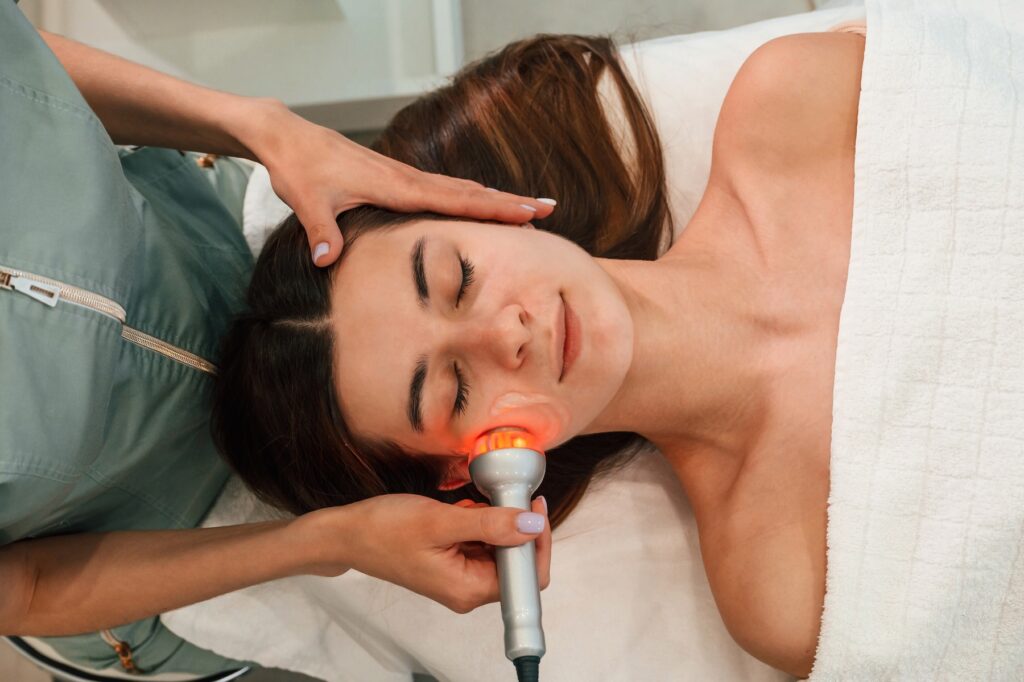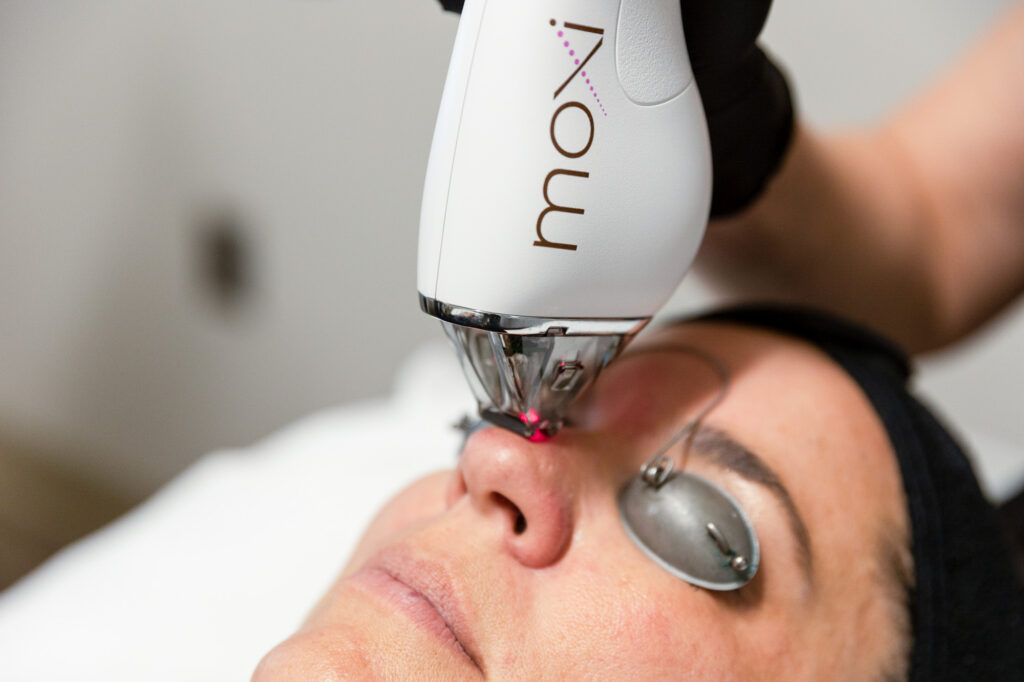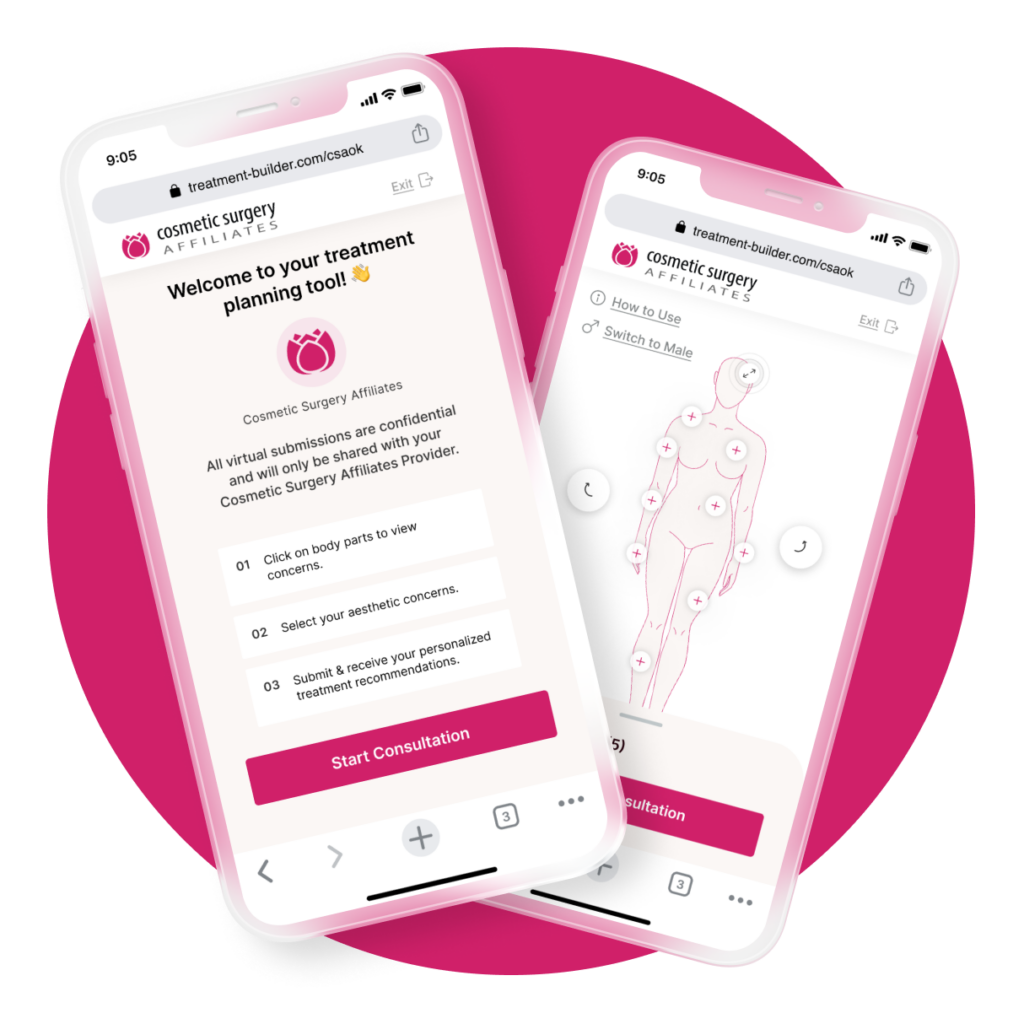During your consultation, your provider will discuss all your treatment options, including chemical peels in Oklahoma City. They’ll explain the different levels of peels and the varying options we have for each level. Together, you’ll determine if chemical peels are right for you, and if so, which peels would help you best target your unique cosmetic concerns.
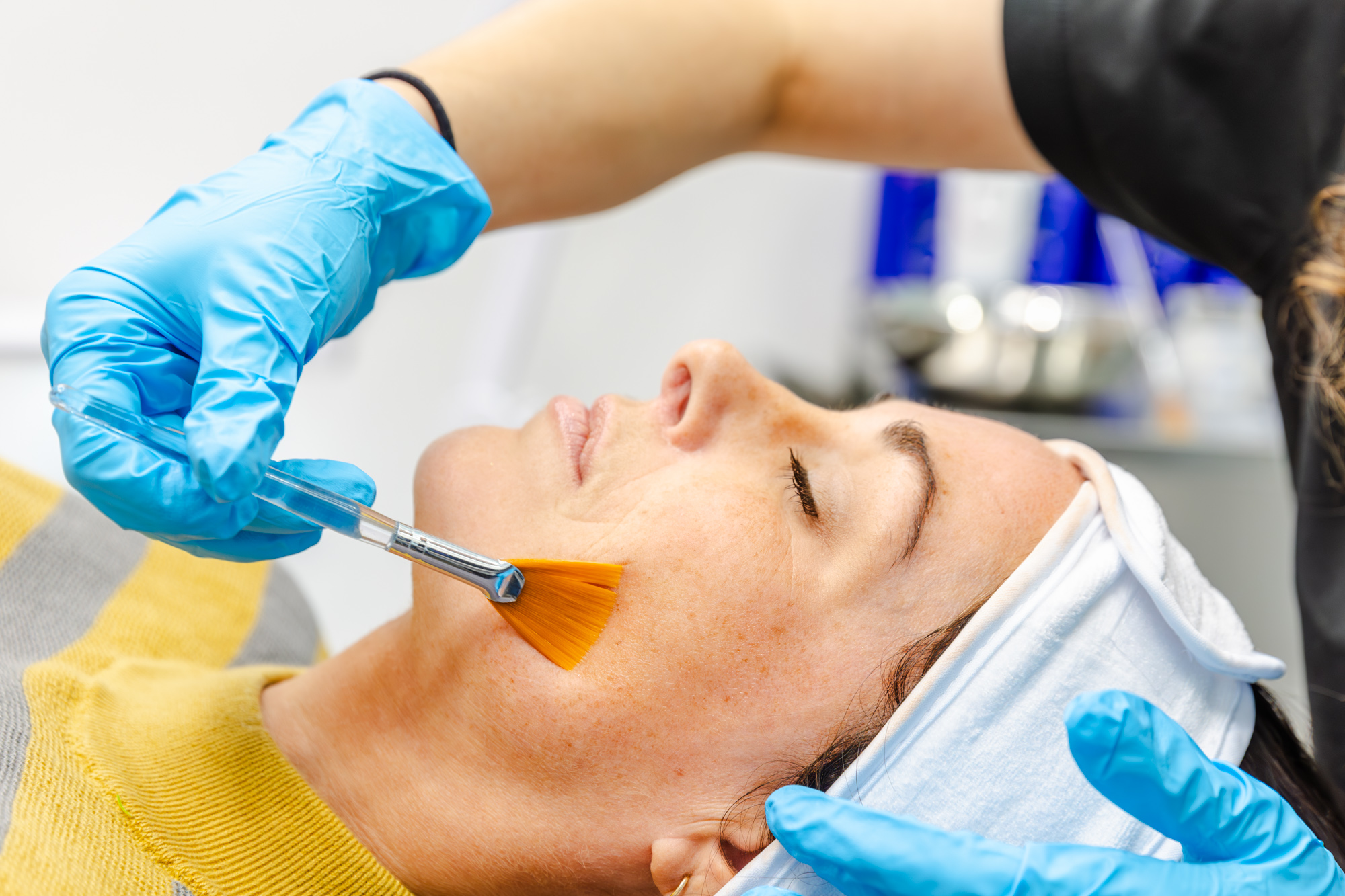

What Is a Chemical Peel?
Skin cells, dirt, dried sweat, and debris can build up over time, clogging our pores and making our skin look dull and congested. At Cosmetic Surgery Affiliates, we offer customized chemical peels in Oklahoma City to rejuvenate your skin.
Chemical peels remove the uppermost layer of skin, called the epidermis, leaving you with a refreshed, youthful glow.
- Fine lines
- Wrinkles
- Acne
- Scarring
- Uneven skin tone
- Age spots
- Sun damaged skin
- Dull, congested skin


How It Works
Chemical peels use a custom chemical solution that causes controlled damage to your epidermis. This causes the skin to peel away and stimulates your body’s healing process to increase collagen and elastin production. These two proteins work to replace the damaged cells with healthy, refreshed ones.
Chemical peels come in three varying levels: light, medium, and deep peels. These peels target your skin at different depths and vary in the amount of downtime they require. However, they all work to create healthy, glowing skin.
What To Expect
Consultation
Before receiving your chemical peel, you first meet with one of our expert providers to discuss all the treatment options for your skin. They listen closely while you discuss what issues you are experiencing, then explain all our offered treatments that might benefit you.
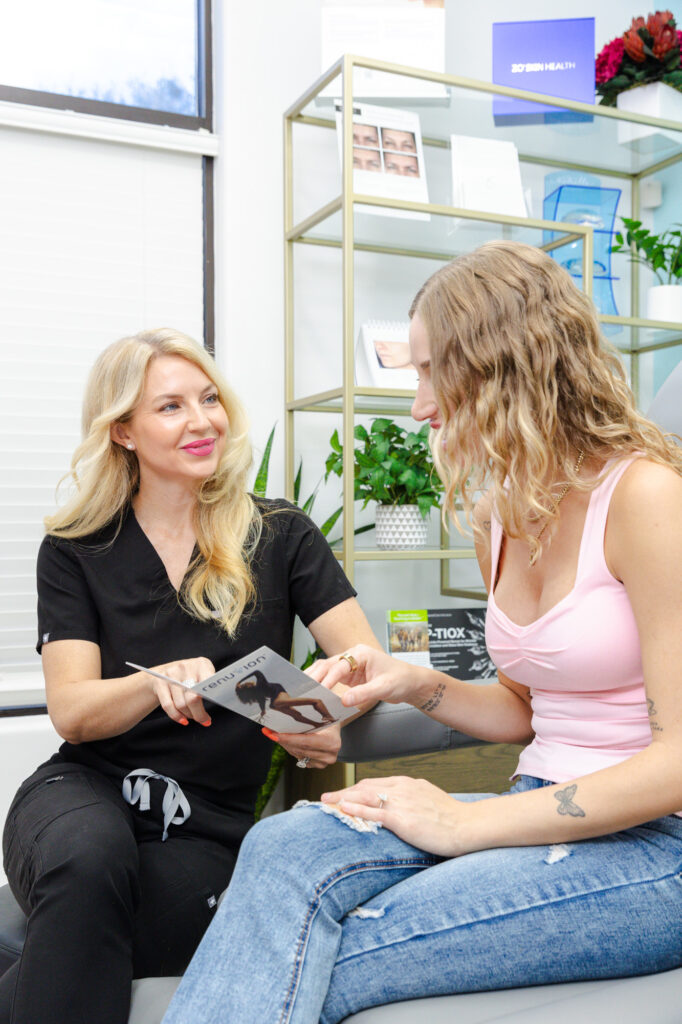
Care Plan
Once you have learned about all your treatment options, you and your provider will create your custom care plan. This can include just one or many treatments, but it will only use the treatments that will help you achieve healthy, glowing skin. Once you have decided that chemical peels are right for you, your provider will help you choose the best one.

Treatment
Your provider begins the peel process by cleaning your skin of any dried sweat and dirt. Once your face is clean, they apply the unique chemical solution to your skin, ensuring to spread it evenly across your skin. They will leave the peel solution on your skin for about 30 minutes, allowing your skin to soak it in before cleaning your face again.

Results
Your skin will begin to peel within 2 to 3 days following your chemical peel in Oklahoma City. It will continue to peel for about 5 to 7 days, revealing fresh, rejuvenated skin. Your provider will give you aftercare instructions to follow when you arrive home, as well as help you schedule your additional peel sessions.
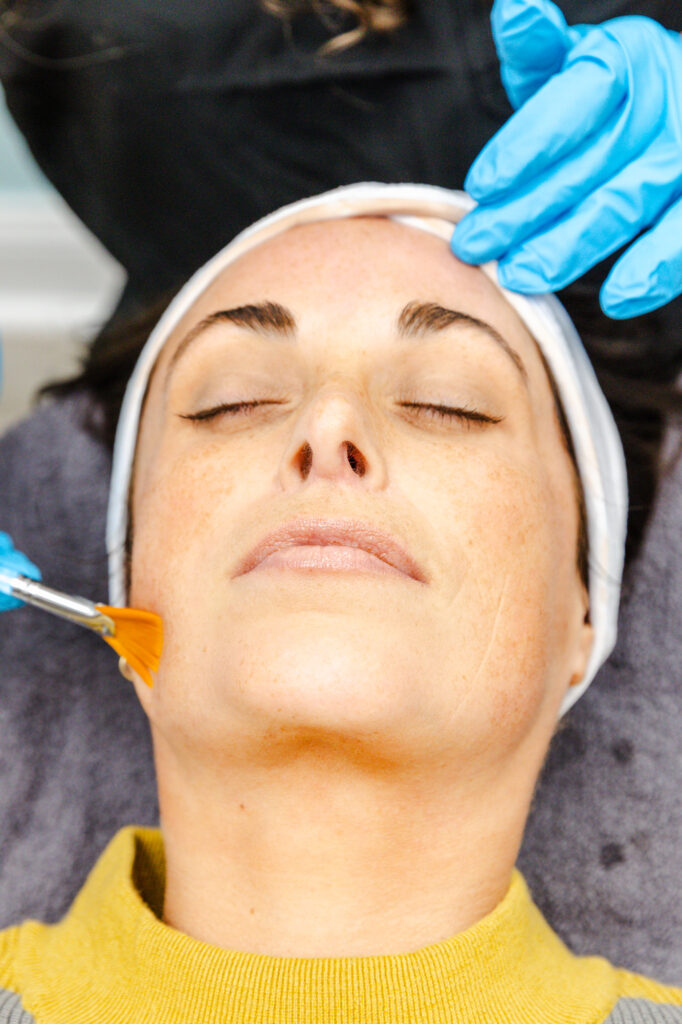
Enjoy Your Skin Solutions
We offer many treatments to enhance your skin’s appearance. Find the best solutions for your unique skin concerns using our custom treatment planning tool.


Benefits of a Chemical Peel
While there are many benefits to getting a chemical peel in Oklahoma City, here are the reasons why our patients love getting their peels from CSA.
Our team has many options for all the levels of chemical peels, each targeting specific skin issues. We can customize your treatment to address your unique aesthetic concerns, personalizing treatment to your needs.
At CSA, our surgeons and providers are leaders in the industry, applying their knowledge and expertise to every treatment they provide. Your care is in the best hands when working with them.
We understand that some patients are hesitant to accomplish their goals using more invasive procedures. You won't need injections or surgery to accomplish your aesthetic goals.
Taking Guesswork Out of The Equation
Find out if chemical peels are right for you using our custom treatment planning tool.

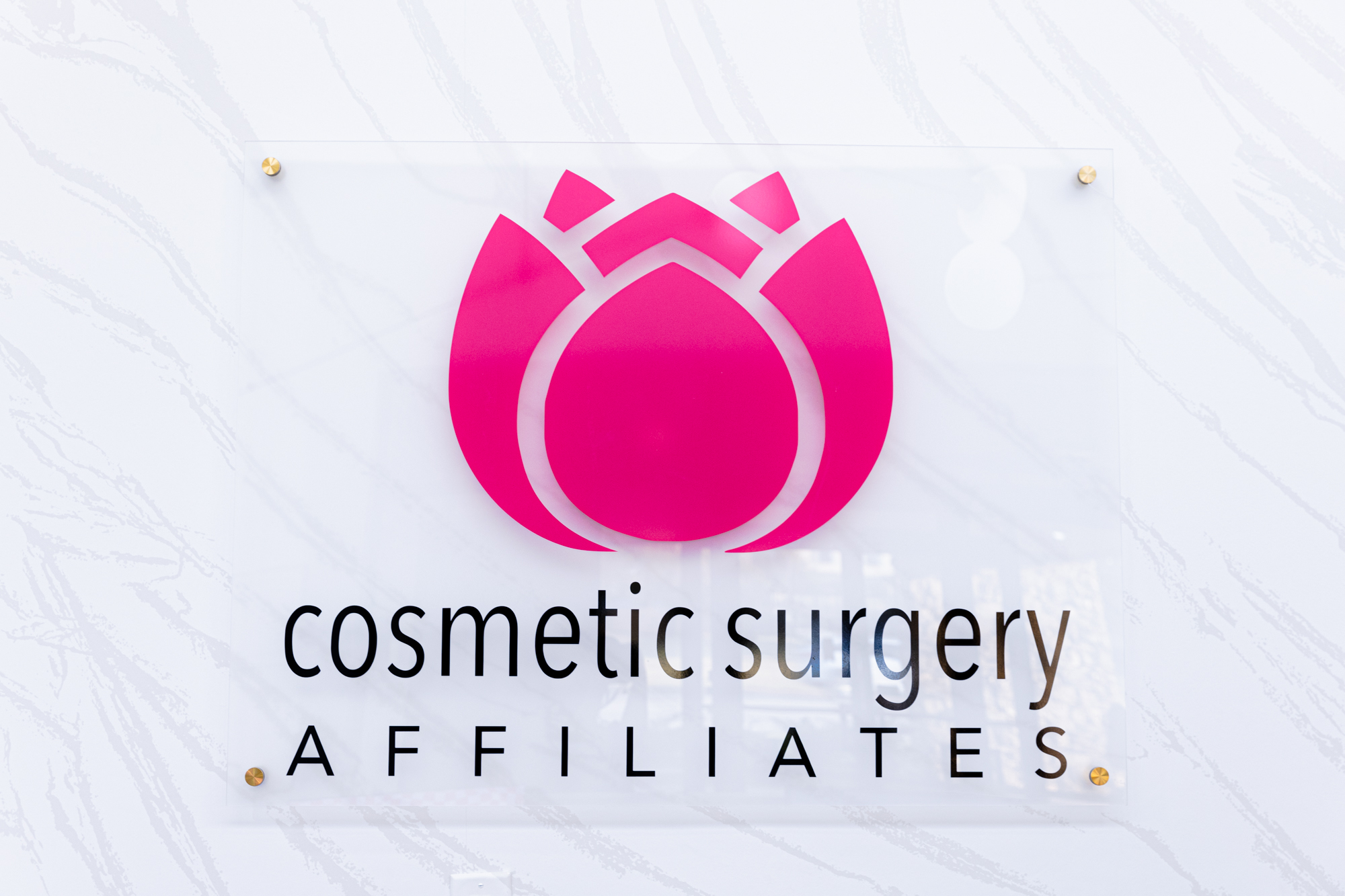
About Cosmetic Surgery Affiliates
Confidence is priceless.
At Cosmetic Surgery Affiliates, we recognize that aesthetics is an investment in yourself. We tend to overlook the most important relationship we have—the one with ourselves—and our surgeons are dedicated to helping you strengthen this connection. Looking and feeling your best is key to living your best, and here, you can have it all.
Learn More
Chemical Peel FAQs
The amount of discomfort you may feel during your peel depends on the level of your chemical peel in Oklahoma City. Light peels target just the surface of your skin and are comfortable, medium peels target the entire epidermis and the top part of the dermis, developing more improvements that will need some downtime and recovery. Deep peels target the dermis and epidermis to create the best results, but the peel process can be uncomfortable and slightly painful. Your provider can talk with you about your peel options and find the best peel for your needs.
Dermabrasion is a facial rejuvenation procedure that treats surface irregularities, giving the skin a softer appearance. Dermabrasion works in many ways similar to chemical peels in Oklahoma City. The difference is that dermabrasion uses surgical tools (a rotating brush or shaving instrument) to remove the top layer of skin through a surgical scraping process. A chemical peel uses a caustic solution that is rubbed into the skin. Both techniques result in a brighter, smoother complexion.

